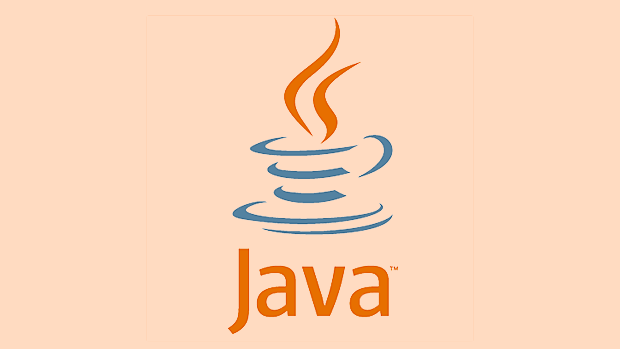Implementing `equals` and `hashCode` correctly in Java.
Jul 06, 2025 am 02:32 AMYou must override both equals() and hashCode() to maintain consistency in hash-based collections. 1) Overriding equals() without hashCode() breaks the contract that equal objects must have equal hash codes, leading to potential lookup failures in HashMap or HashSet. 2) Implement equals() by checking identity, nullity, class type, and field equality using Objects.equals() for nullable fields. 3) Implement hashCode() using the same fields as equals(), preferably with Objects.hash(). 4) Do not include derived or unused fields in hashCode(). 5) Skip overriding only when object identity suffices or when instances are inherently unique and not used in hash collections.

When you're working with Java objects and need to compare them or use them in hash-based collections like HashSet or HashMap, it's essential to override both the equals() and hashCode() methods correctly. Just doing one without the other can lead to inconsistent behavior, especially in collections that rely on hashing.

Why You Need Both equals and hashCode
Java’s contract for Object says that if two objects are equal according to equals(), they must have the same hash code. So if you override equals() but not hashCode(), you risk breaking this rule. That means your object might not work as expected in a HashMap or HashSet.

For example:
- Two objects that are logically equal (based on your
equals) could end up in different buckets because theirhashCode()values differ. - As a result, lookups may fail even though the object is "equal" — which can be really confusing when debugging.
So always override both together.

How to Implement equals Properly
Here’s how to write a solid equals() method:
- Check if the object being compared is the same instance (
this == obj) → return true. - Check if the object is null or of a different class → return false.
- Cast to the correct type.
- Compare all relevant fields for equality.
@Override
public boolean equals(Object obj) {
if (this == obj) return true;
if (obj == null || getClass() != obj.getClass()) return false;
MyType other = (MyType) obj;
return Objects.equals(field1, other.field1) &&
field2 == other.field2;
}A few notes:
- Use
Objects.equals(a, b)for fields that could benull. - For primitive types like
int, just use==. - Make sure you include all fields that define object identity.
Writing a Good hashCode Method
The easiest and safest way is to use Objects.hash(...) with the same fields used in equals():
@Override
public int hashCode() {
return Objects.hash(field1, field2);
}Alternatively, you can build it manually using a seed and combining each field. But unless you have special performance concerns, stick with Objects.hash().
Important points:
- Always use the same set of fields used in
equals(). - Don’t include derived or computed fields unless they’re part of the equality definition.
- If a field isn't used in
equals, it shouldn't be inhashCode.
When You Can Skip Overriding
You don’t need to override these methods if:
- Your class doesn’t care about logical equality beyond object identity.
- You won’t be storing instances in hash-based collections.
- You're dealing with entities where each instance is unique by design (like some event objects).
But in most business logic or domain models — like user data, products, settings — overriding is necessary.
That’s basically it. It’s not complicated, but it’s easy to get wrong. Keep the fields consistent between the two methods, and always pair them when you override.
The above is the detailed content of Implementing `equals` and `hashCode` correctly in Java.. For more information, please follow other related articles on the PHP Chinese website!

Hot AI Tools

Undress AI Tool
Undress images for free

Undresser.AI Undress
AI-powered app for creating realistic nude photos

AI Clothes Remover
Online AI tool for removing clothes from photos.

Clothoff.io
AI clothes remover

Video Face Swap
Swap faces in any video effortlessly with our completely free AI face swap tool!

Hot Article

Hot Tools

Notepad++7.3.1
Easy-to-use and free code editor

SublimeText3 Chinese version
Chinese version, very easy to use

Zend Studio 13.0.1
Powerful PHP integrated development environment

Dreamweaver CS6
Visual web development tools

SublimeText3 Mac version
God-level code editing software (SublimeText3)

Hot Topics
 Selecting Specific Columns | Performance Optimization
Jun 27, 2025 pm 05:46 PM
Selecting Specific Columns | Performance Optimization
Jun 27, 2025 pm 05:46 PM
Selectingonlyneededcolumnsimprovesperformancebyreducingresourceusage.1.Fetchingallcolumnsincreasesmemory,network,andprocessingoverhead.2.Unnecessarydataretrievalpreventseffectiveindexuse,raisesdiskI/O,andslowsqueryexecution.3.Tooptimize,identifyrequi
 What is the `enum` type in Java?
Jul 02, 2025 am 01:31 AM
What is the `enum` type in Java?
Jul 02, 2025 am 01:31 AM
Enums in Java are special classes that represent fixed number of constant values. 1. Use the enum keyword definition; 2. Each enum value is a public static final instance of the enum type; 3. It can include fields, constructors and methods to add behavior to each constant; 4. It can be used in switch statements, supports direct comparison, and provides built-in methods such as name(), ordinal(), values() and valueOf(); 5. Enumeration can improve the type safety, readability and flexibility of the code, and is suitable for limited collection scenarios such as status codes, colors or week.
 Applying Semantic Structure with article, section, and aside in HTML
Jul 05, 2025 am 02:03 AM
Applying Semantic Structure with article, section, and aside in HTML
Jul 05, 2025 am 02:03 AM
The rational use of semantic tags in HTML can improve page structure clarity, accessibility and SEO effects. 1. Used for independent content blocks, such as blog posts or comments, it must be self-contained; 2. Used for classification related content, usually including titles, and is suitable for different modules of the page; 3. Used for auxiliary information related to the main content but not core, such as sidebar recommendations or author profiles. In actual development, labels should be combined and other, avoid excessive nesting, keep the structure simple, and verify the rationality of the structure through developer tools.
 What is the JDK?
Jun 25, 2025 pm 04:05 PM
What is the JDK?
Jun 25, 2025 pm 04:05 PM
JDK (JavaDevelopmentKit) is a software development environment for developing Java applications and applets. It contains tools and libraries required to compile, debug and run Java programs. Its core components include Java compiler (javac), Java runtime environment (JRE), Java interpreter (java), debugger (jdb), document generation tools (javadoc) and packaging tools (such as jar and jmod). Developers need JDK to write, compile Java code and develop with the help of IDE; without JDK, Java applications cannot be built or modified. You can enter javac-version and java-version in the terminal
 VSCode debugger for Java setup guide
Jul 01, 2025 am 12:22 AM
VSCode debugger for Java setup guide
Jul 01, 2025 am 12:22 AM
The key steps in configuring the Java debugging environment on VSCode include: 1. Install JDK and verify; 2. Install JavaExtensionPack and DebuggerforJava plug-in; 3. Create and configure the launch.json file, specify mainClass and projectName; 4. Set up the correct project structure to ensure the source code path and compilation output are correct; 5. Use debugging techniques such as Watch, F8/F10/F11 shortcut keys and methods to deal with common problems such as class not found or JVM attachment failure.
 XML rules: Common errors to avoid
Jun 22, 2025 am 12:09 AM
XML rules: Common errors to avoid
Jun 22, 2025 am 12:09 AM
Methods to avoid XML errors include: 1. Ensure that the elements are nested correctly, 2. Escape special characters. Correct nesting avoids parsing errors, while escape characters prevent document corruption, using an XML editor can help maintain structural integrity.
 How do I set up VS Code for Java development?
Jun 29, 2025 am 12:23 AM
How do I set up VS Code for Java development?
Jun 29, 2025 am 12:23 AM
To use VSCode for Java development, you need to install the necessary extensions, configure the JDK and set up the workspace. 1. Install JavaExtensionPack, including language support, debugging integration, build tools and code completion functions; optional JavaTestRunner or SpringBoot extension package. 2. Install at least JDK17 and verify through java-version and javac-version; set the JAVA_HOME environment variable, or switch multiple JDKs in the status bar at the bottom of VSCode. 3. After opening the project folder, make sure the project structure is correct and enable automatic saving, adjust the formatting rules, enable code checking, and configure the compilation task to optimize the opening.
 Windows search bar not typing
Jul 02, 2025 am 10:55 AM
Windows search bar not typing
Jul 02, 2025 am 10:55 AM
When the Windows search bar cannot enter text, common solutions are: 1. Restart the Explorer or computer, open the Task Manager to restart the "Windows Explorer" process, or restart the device directly; 2. Switch or uninstall the input method, try to use the English input method or Microsoft's own input method to eliminate third-party input method conflicts; 3. Run the system file check tool, execute the sfc/scannow command in the command prompt to repair the system files; 4. Reset or rebuild the search index, and rebuild it through the "Index Options" in the "Control Panel". Usually, we start with simple steps first, and most problems can be solved step by step.






